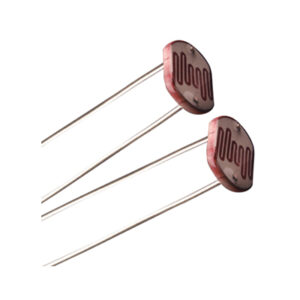Technical jargon can be great—it certainly weeds out the experts from the novices—but isn’t it convenient when connector terminology reflects humankind?
Numerous connector parts, pieces, and actions are named after familiar human parts, pieces, and actions that most everyone is familiar with: male, female, housing, shield, mating, etc. Anyone (anyone over the age of ten, I’ll say) can hear this vocabulary and get a strong picture in their head of the essence of it. And with all these words, connector terminology refers to the same (or a very similar) thing as the human word.
Easy, right? So let’s take a look at the most relatable and comprehendible (to humans, at least) connector terminology.
Gender
The gender of a connector refers to whether it plugs in or is plugged into and is typically male or female, respectively (kids, ask your parents for a more thorough explanation). Unfortunately, there are cases where a connector may be referred to as “male” when it would appear to be female; in the examples section, we’ll point a few of those out as we discuss individual component types and explain why that’s the case. As we can see the figure, Male (left) and female 2.0mm PH series JST connectors. In this case, gender is determined by the individual conductor.
 Polarity
Polarity
Most connectors can only be connected in one orientation. This trait is called polarity, and connectors which have some means to prevent them being connected wrong are said to be Polarized, or sometimes Keyed. A polarized wall plug is shown in figure below. By having two different widths for the plug blades, the plug will only go into the outlet one way.
Contact
Contacts are the business portion of the connector. They are the metal parts which touch each other, forming an electrical connection. This is also where problems occur: the contacts can become soiled or oxidized, or the springiness required to hold the contacts together may fade with time.
Pitch
Many connectors consist of an array of contacts in a repeated pattern. The pitch of the connector is the distance from the center of one contact to the center of the next. This is important, because there are many families of contacts which look very similar but may differ in pitch, making it difficult to know that you are purchasing the right mating connector. As shown in figure below, we can see that the pitch of the pins on the headers on a standard Arduino is .1″.
Mating cycles
Connectors have a finite life, and connecting and disconnecting them is what wears them out. Datasheets usually present that information in terms of Mating cycles, and it varies widely from one technology to another. A USB connector may have a lifetime in the thousands or tens of thousands of cycles, while a board-to-board connector designed for use inside of consumer electronics may be limited to tens of cycles. It’s important that you select a connector with a suitable life for the application.
Mount
This one has the potential for being confusing. The term “mount” can refer to several things: how the connector is mounted in use (panel mount, free-hanging, board mount), what the angle of the connector is relative to its attachment (straight or right-angle), or how it is mechanically attached (solder tab, surface mount, through hole). We’ll discuss this more in the examples section for each individual connector. A comparison of three different methods of mounting the same barrel connector: (left to right) board mount, inline cable mount, and panel mount.
Strain relief
When a connector mounts to a board or cable, the electrical connections tend to be somewhat fragile. It is typical to provide some kind of strain relief to transfer any forces acting on that connector to a more mechanically sound object than the fragile electrical connections. Again, there will be some good examples of this later on. This 1/8″ headphone jack comes with a strain relief “boot” slid over the cable to prevent forces on the cable from being transmitted directly to the electrical joints.
Blind Mate
A condition in which two fixed connections must mate without benefit of human manipulation to align the connectors.
Unlike humans, all connectors are blind, so this bit of connector terminology takes a little more thought. A blind mate refers not to the connectors themselves (because they are always blind), but to the humans who connect the connectors together. When their human countertops are also handicapped, connectors perform a blind mate, in which they’re able to mate without outside help.
Guide Pin
A pin, rod, or projection extending beyond the mating face of a component designed to guide the mating of the component to ensure proper alignment of the contacts.
Like a tour guide, always extending out in front of the group, the guide pin completes his job by escorting others.
Thank you for reading the blog,
For information on connectors, click the link below,
http://tenettech.com/category/260/terminals-connectors
If you have any queries, please drop a mail to info@tenettech.com














